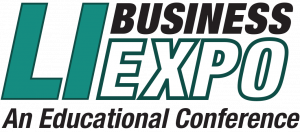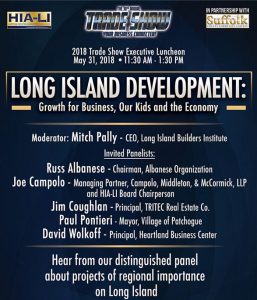Alan R. Sasserath, CPA, MS
Partner, Sasserath & Zoraian, LLP
As discussed in a previous article, the Tax Cuts and Jobs Act (“TCJA”) is here to stay and our challenge is to understand how to react to it to minimize our taxes. This article will focus on the international provisions of the TCJA and how US companies with foreign operations and foreign companies with US operations should react. It’s a worthwhile read if you own all or part of a foreign company or are thinking about expanding your business beyond the US.
Below is a discussion of some of the international provisions that affect controlled foreign corporations (“CFCs”). CFCs are generally foreign entities owned more than 50% by a US “person” (individual, partnership, corporation, etc.) or persons. Of course, we will also discuss what the US owners of CFCs should think about to minimize the effect of such provisions. (Please keep in mind that this is a high-level discussion of the Federal tax provisions and you should consult your tax advisor regarding such planning.)
1. Transition Rules to the Modified Territorial System: The new international tax system under the TCJA is known as the Modified Territorial System (“MTS”). The TCJA was signed into law on December 22, 2017 and went into effect on January 1, 2018. At the time the law was signed, there were large amounts of previously untaxed income that were retained in foreign countries under the pre-TCJA international tax system. Accordingly, there wasn’t a lot of time to plan for this provision of the TCJA for calendar year entities. Under the transitional rules, such previously untaxed income will be taxed to the U.S. owners at either 15.5% or 8%. This provision applies to US C corporations that own more than 10% of a foreign entity and other US owners, other than S corporations, of a CFC. S corporations are permitted continued deferral. Again, calendar year taxpayers had nine days to plan to try to do what they could to get to the 8% tax rate or avoid the tax in its entirety.
However, fiscal year taxpayers do have time to plan since the tax relates to the last fiscal year beginning before January 1, 2018. Accordingly, if your fiscal year end is September 30 and you have $250 billion in previously untaxed, overseas profits (think Apple), then you have until September 30, 2018 to plan a way to decrease the tax rate from 15.5% to 8%. The main driver of the difference in tax rates is whether the untaxed overseas profits are sitting in cash and similarly viewed assets (15.5%) or harder assets like inventory or fixed assets (8%). Again, if you have a fiscal year, whether you have $250 billion or $1 million in overseas profits, you should be doing whatever you can to reduce the tax rate from 15.5% to 8%. One last item to note is that this tax can be paid over eight years with a timely election.
2. Global Intangible Low Taxed Income (“GILTI”): If you ever wondered what our elected officials thought of U.S. companies with foreign operations, please see this acronym: GILTI (pronounced “guilty”), and you will learn everything you need to know. GILTI relates to the global minimum tax that the US now charges on US CFCs. It is possible that majority owned foreign entities/minority owned US entities get dragged into these rules as ell. Under the pre-TCJA rules, if a CFC owned an active foreign entity, then that foreign entity’s earnings were not taxed in the US until such funds were repatriated to the US. Now, under TCJA, practically speaking, if a US person owns an active CFC, then they are required to calculate the amount of tax on such foreign income (known as GILTI) after certain adjustments are made to the foreign income.
The calculations of the tax on GILTI for a US C corporation and an individual, either directly or via a pass-through entity, are very different. For a C corporation, the effective tax rate is 10.5% of GILTI before foreign tax credit. Also, if the foreign corporation paid 13.125% or more of tax to the foreign country, then the tax on GILTI would be zero for that year due to the allowance of the foreign tax credit. For an individual, the effective tax rate is 37% of GILTI. That’s right: there is a 26.5% difference in tax rate and potentially 37% difference with the inclusion of the foreign tax credit in tax rate between owning a CFC via a C corporation and an individual since individuals are not permitted to utilize the corporate foreign tax as a credit against US individual tax in this situation. However, there is an election that an individual can make to be treated as a C corporation for the purpose of this tax effectively lowering their rate to that of a C corporation. Since the election has been in the law for many years and GILTI is a new concept, we don’t know if an individual will be entitled to all the benefits afforded to a C corporation. We are waiting for further guidance on this.
If you own a foreign entity that will be subject to GILTI either directly or through a pass-through entity, then you may want to contribute such ownership into an LLC ASAP. With an LLC, you are permitted to make an election to be treated as an S corporation, C corporation, partnership or disregarded entity. While such election is generally required to be made within 75 days of formation, that period can be extended if there is reasonable cause. I would hope that the IRS would accept “ambiguity of the tax law” as reasonable cause to file a late election.
3. Foreign Derived Intangible Income (“FDII”): FDII generally relates to property sold or services provided by a US C corporation to a non-US person. The tax calculations are similar to the GILTI tax calculations; however, the effective tax rate on this income is 13.125% as opposed to the 10.5% tax rate on GILTI. One of the strategies to get the benefit of the 13.125% FDII tax rate would be for a company that is a pass-through entity to drop their non-US sales into a separate C corporation to take advantage of the low tax rates on such income. However, this planning strategy would more likely apply to entities that were not eligible for the pass-through entity 20% deduction under the TCJA. Also, foreign corporations that set up a US C corporation would be eligible for this benefit as well for sales via the US C corporation. Could the US become a tax haven for foreign companies in high tax jurisdictions? Finally, DISCs are still available as well to be used in conjunction with this planning opportunity.
In addition to the provisions above, there are many others. Also, there is a fair amount of confusion surrounding several provisions, some of which were mentioned above. In addition to the suggestions above, here are a few others, in general, as they relate to the international provisions under the TCJA:
- Revisit any “check the box” elections that you made or decided not to make in the past. Based on the changes resulting from the TCJA, you may come up with a different answer.
- As you can see with GILTI and FDII, C corporations are favored under the TCJA. As mentioned above, there is an election available to individuals to, potentially, get the same benefits as a C corporation with regards to GILTI. Don’t be so quick to convert your pass-through entities to C corporations. Once you convert to a C corporation, there is a five-year waiting period to be able to elect S corporation status again without IRS consent. Also, once S status is elected again, there is an additional five-year waiting period to get all of the benefits of S corporation ownership back. That five-year waiting period is measured from the time you decide to revert to an S corporation. It is not unheard of that the TCJA will be “reversed” depending on the results of future elections, but such a reversal would be unlikely, especially in the near term.
- If you plan and are successful to avoid the CFC rules, then you must be wary of the Passive Foreign Investment Company (“PFIC”) rules. As onerous as the CFC rules above are, the PFIC rules can be even worse.
- If you are going to go the C corporation route, try to restructure to get a potential future benefit in the way of section 1202 stock. The benefit of section 1202 stock is that shareholders can avoid all Federal and potentially State income tax on up to $10 million of gain in the event of a future stock sale.
- The discussion above relates to Federal income tax changes. Please note that state taxes will apply as well and can be equally or more complicated.
- Some of the provisions discussed above sunset at pre-determined dates. For example, the effective tax rate related to FDII increases from 13.125% to 16.41% for tax years beginning after December 31, 2025.
The bottom line: if you own a foreign entity, then you should consult with your tax advisor immediately if you have not already done so. Once the technical corrections to the TCJA are deployed as we hope/expect later in 2018, we should have more clarity on the provisions that are unclear at the moment. At that point, you should re-confirm that you are maximizing your opportunities from the tax perspective.
This article does not necessarily reflect the views of CMM and does not constitute legal or tax advice. Please consult with your accountant about your particular tax situation.
 On behalf of client Wave Capital Consulting, Inc., Campolo, Middleton & McCormick successfully closed a deal involving the purchase of substantially all the assets of a major events management company. The transaction, which closed in April 2018, included the acquisition of rights to business networking and sales events and domain names including NY XPO, LI Business Expo, and NY Market Expo, some of the most recognizable names in trade shows and facilitated networking. CMM’s Vincent Costa brought the deal to a swift close along with Donald Rassiger.
On behalf of client Wave Capital Consulting, Inc., Campolo, Middleton & McCormick successfully closed a deal involving the purchase of substantially all the assets of a major events management company. The transaction, which closed in April 2018, included the acquisition of rights to business networking and sales events and domain names including NY XPO, LI Business Expo, and NY Market Expo, some of the most recognizable names in trade shows and facilitated networking. CMM’s Vincent Costa brought the deal to a swift close along with Donald Rassiger.
















 HIA-LI 30th Annual Trade Show: Long Island’s Largest B2B Trade Show & Conference
HIA-LI 30th Annual Trade Show: Long Island’s Largest B2B Trade Show & Conference



























